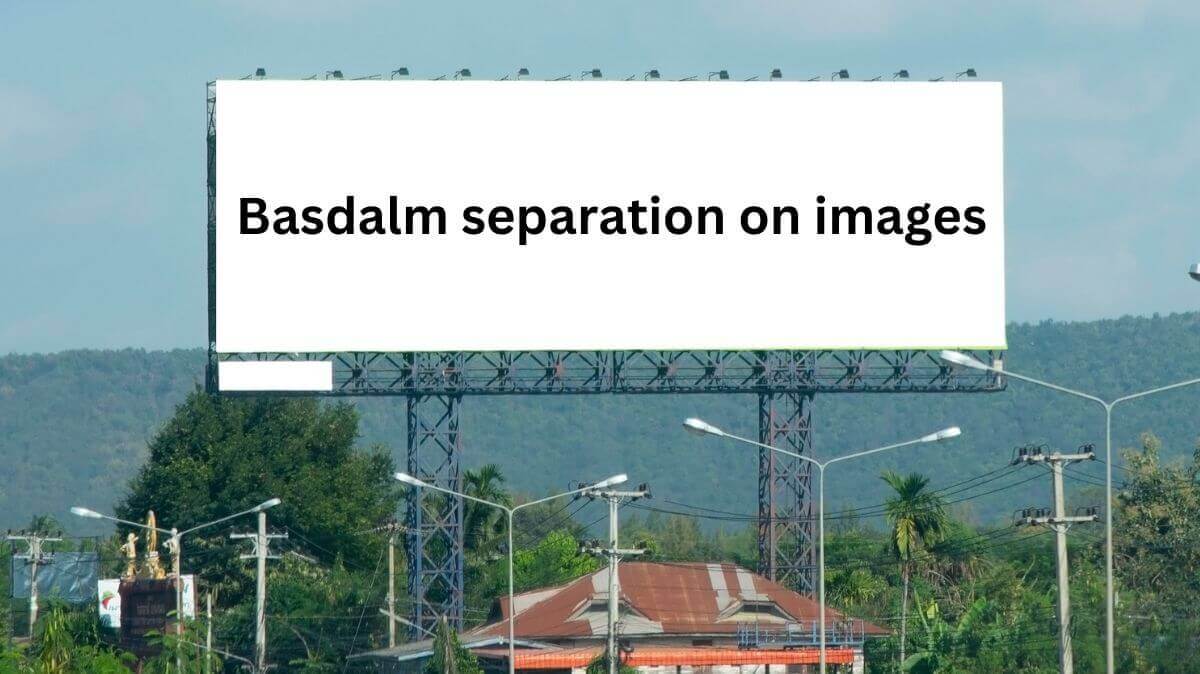Introduction to Basdalm Separation on Image
The world of image processing has seen significant advancements, with one technique standing out: Basdalm separation on images. This innovative method allows for the effective extraction and manipulation of various components within an image, making it a hot topic in both academic circles and industry applications. Whether you’re a photographer looking to enhance your work or a developer seeking new ways to process images efficiently, understanding Basdalm separation can open up numerous doors.
But what exactly does this technique entail? As we delve deeper into its foundations and explore traditional methods alongside emerging trends, you’ll discover how this powerful tool is shaping the future of visual content creation. Join us as we uncover the intricacies of Basdalm separation on images and examine its vast potential across diverse fields!
Traditional Techniques for Basdalm Separation on Images
Traditional techniques for basdalm separation on images have laid the groundwork for modern advancements. One of the most widely used methods is thresholding. This technique involves setting a specific value to distinguish between different areas in an image, effectively segmenting the object from its background.
Another popular approach is edge detection. By identifying abrupt changes in pixel intensity, this method highlights the edges of objects within an image. Algorithms like Canny or Sobel are commonly employed to enhance visibility and help with further analysis.
Region growing is another classic technique that starts from seed points and expands outwards based on predefined criteria. It allows for more controlled segmentation, especially when dealing with complex images where simple thresholding might fail.
These foundational methods continue to influence newer techniques while offering valuable insights into separating basdalms effectively.
Emerging Trends in Basdalm Separation on Images
The landscape of Basdalm separation on images is rapidly evolving. New algorithms are making strides in accuracy and efficiency, allowing for more precise delineation of complex images.
Machine learning techniques are at the forefront. By training models with vast datasets, systems can recognize patterns that were previously elusive. This advancement significantly reduces manual intervention.
Another exciting trend is the integration of augmented reality (AR). As AR technology matures, it offers innovative ways to visualize basdalm-separated images in real-time environments.
Moreover, cloud-based solutions are emerging as a popular choice for processing heavy imagery tasks. These platforms provide scalability and speed while enhancing collaboration among teams.
The rise of open-source tools democratizes access to advanced techniques. Developers from around the globe contribute to this growing community, sharing knowledge and pushing boundaries further than ever before.
Advantages and Disadvantages of Different Techniques
When exploring basdalm separation on images, various techniques come into play, each with its own set of benefits and drawbacks.
Traditional methods like thresholding are straightforward and easy to implement. They work well in controlled environments but often struggle with complex backgrounds or varied lighting conditions. This can lead to inaccuracies in the final output.
On the other hand, machine learning approaches offer remarkable precision. These advanced techniques adapt based on data patterns, enhancing their effectiveness over time. However, they require substantial computational resources and a solid dataset for training.
Additionally, hybrid methods combine strengths from different techniques but can introduce complexity in implementation. While they provide flexibility and improved accuracy, managing these systems demands expertise.
Selecting the right technique hinges on specific project requirements—balancing ease of use against desired outcomes is essential for success.
Also Read: Daryn Allene Wood aka Tefnut Light: A Fusion of Art and Spirituality
Applications of Basdalm Separation on Images
Basdalm separation on images has a wide range of applications across various fields. In medical imaging, it plays a crucial role in enhancing diagnostic capabilities. By isolating specific features within an image, healthcare professionals can identify abnormalities with greater accuracy.
In the realm of computer vision, basdalm separation techniques streamline object detection and recognition processes. This is particularly valuable in autonomous vehicles and surveillance systems where precision is critical for safety and security.
The art world also benefits from these methods. Artists use them to manipulate digital artworks by focusing on particular elements while keeping others intact, creating stunning visual effects.
Moreover, in environmental studies, researchers apply basdalm separation to analyze satellite images for monitoring land-use changes or assessing natural disasters’ impact. Each application showcases the versatility and importance of this technique in optimizing image analysis across diverse domains.
Future Possibilities and Innovations in Basdalm Separation on Images
The future of Basdalm Separation on Images is ripe with potential. As technology advances, we can anticipate breakthroughs that could redefine how images are processed and analyzed.
Artificial intelligence plays a pivotal role in this evolution. Machine learning algorithms are becoming more sophisticated, enabling faster and more accurate separations. This innovation will lead to enhanced precision in fields like medical imaging and autonomous driving.
Moreover, the integration of augmented reality (AR) can transform user interactions with separated image data. Imagine overlaying real-time information onto visual feeds, allowing for deeper insights during analysis.
Collaboration across disciplines is also key. By blending computer vision research with artistic techniques, new methods may emerge that not only enhance functionality but also aesthetic appeal in image processing.
As researchers continue to explore unexplored avenues, the landscape of Basdalm Separation holds promising possibilities worth watching closely.
Conclusion
Basdalm separation on images is an evolving field that’s gaining traction across various industries. As technology advances, new techniques are being developed and traditional methods refined. This constant innovation pushes the boundaries of what we can achieve with image processing.
The interplay between different approaches creates a rich tapestry of options for professionals seeking to enhance their work. With applications ranging from medical imaging to remote sensing, the implications are vast and transformative.
Staying informed about emerging trends will not only help practitioners choose the right method but also inspire novel solutions in their specific fields. The future holds exciting possibilities where creativity meets technology, leading us towards more effective basdalm separation techniques and applications that we have yet to imagine.
